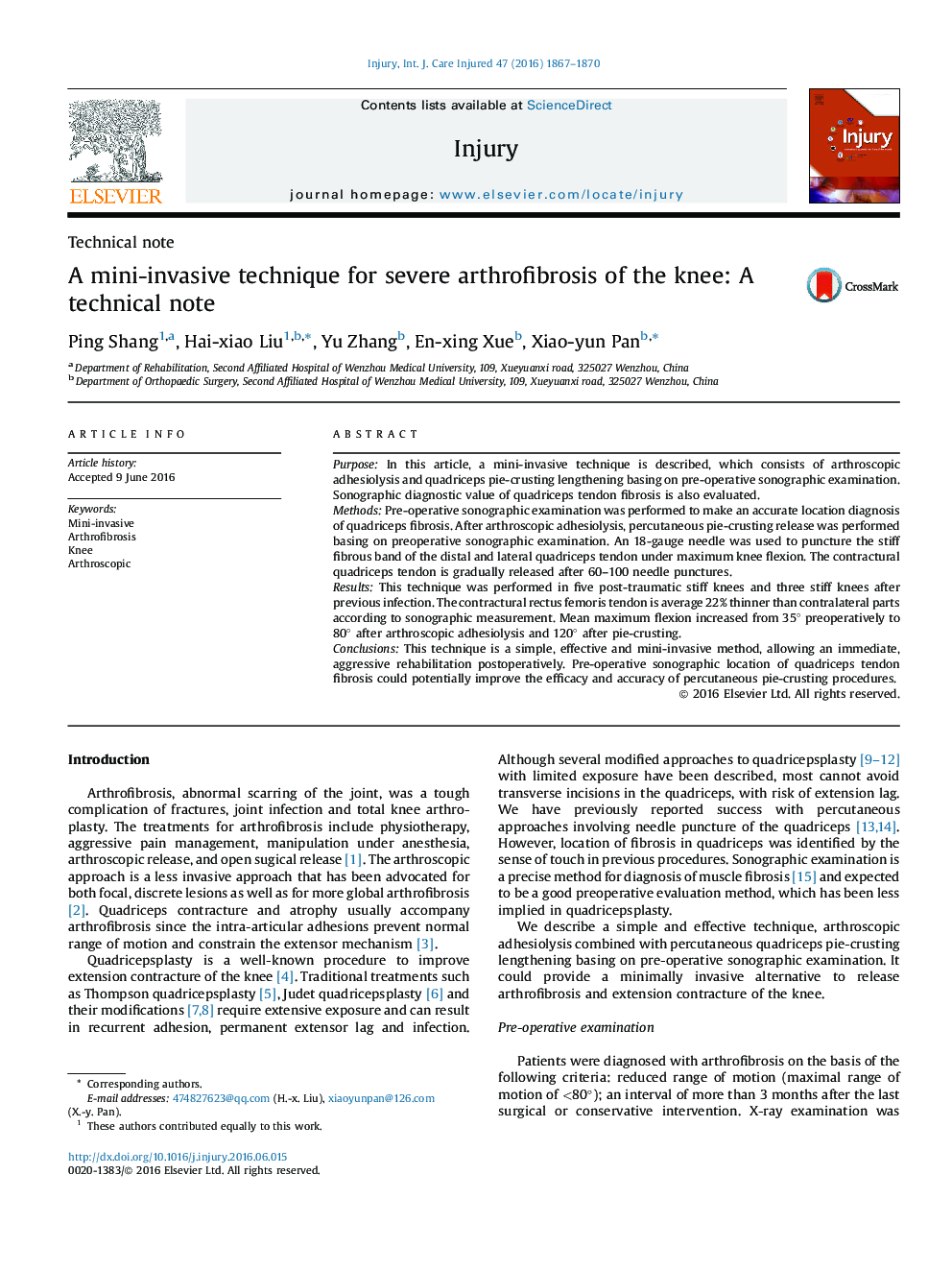| کد مقاله | کد نشریه | سال انتشار | مقاله انگلیسی | نسخه تمام متن |
|---|---|---|---|---|
| 6082696 | 1205970 | 2016 | 4 صفحه PDF | دانلود رایگان |
PurposeIn this article, a mini-invasive technique is described, which consists of arthroscopic adhesiolysis and quadriceps pie-crusting lengthening basing on pre-operative sonographic examination. Sonographic diagnostic value of quadriceps tendon fibrosis is also evaluated.MethodsPre-operative sonographic examination was performed to make an accurate location diagnosis of quadriceps fibrosis. After arthroscopic adhesiolysis, percutaneous pie-crusting release was performed basing on preoperative sonographic examination. An 18-gauge needle was used to puncture the stiff fibrous band of the distal and lateral quadriceps tendon under maximum knee flexion. The contractural quadriceps tendon is gradually released after 60-100 needle punctures.ResultsThis technique was performed in five post-traumatic stiff knees and three stiff knees after previous infection. The contractural rectus femoris tendon is average 22% thinner than contralateral parts according to sonographic measurement. Mean maximum flexion increased from 35° preoperatively to 80° after arthroscopic adhesiolysis and 120° after pie-crusting.ConclusionsThis technique is a simple, effective and mini-invasive method, allowing an immediate, aggressive rehabilitation postoperatively. Pre-operative sonographic location of quadriceps tendon fibrosis could potentially improve the efficacy and accuracy of percutaneous pie-crusting procedures.
Journal: Injury - Volume 47, Issue 8, August 2016, Pages 1867-1870
